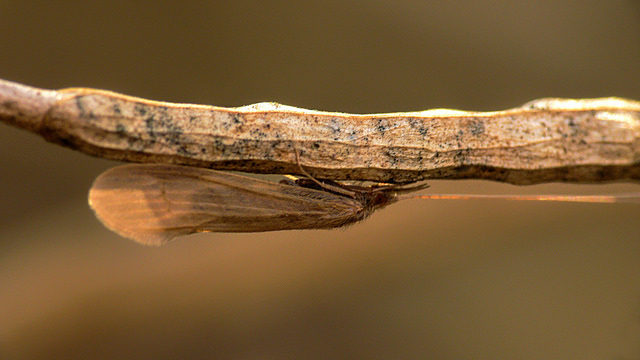Trichoptera

Divided into 45 families,with some 12,000 species and 600 genera, the Trichoptera or caddisflies are one of the most diverse orders of aquatic insects. They are closely related to the Butterflies and Moths (Lepidoptera) with the Trichoptera having the more primitive characteristics. Some caddis flies can be confused with some species of moths, but the wings of the caddisfly is hairy not scaled as with moths. The name Trichoptera comes from the Greek trich, "hair" + ptera, "wings".
Almost all Trichoptera larvae are aquatic mostly feeding on decaying organic matter but the larvae of some species are predatory. Trichoptera larvae, like Lepidoptera larvae, are capable of producing silk from which the create either nets, or in some species cases which they use as retreats. The silk is spun around the larvae and used as a glue to bind together the material the larvae uses to form the casing. Each species case building has its own preferred casing material, leaves, twigs, sand, stones, or shells. The species that create nets use them trap food and live in fast following water. They also tend to have harder bodies than the case building species do.
These insects are an important part of freshwater ecology with both the larvae and adults being eaten by fish and birds. Adult Trichoptera species have simple mouth parts and though some species feed on nectar most adults probably do not feed at all. The adults usually fly at dusk and the smaller species rarely travel far from the pond or stream that they were born in.


